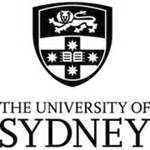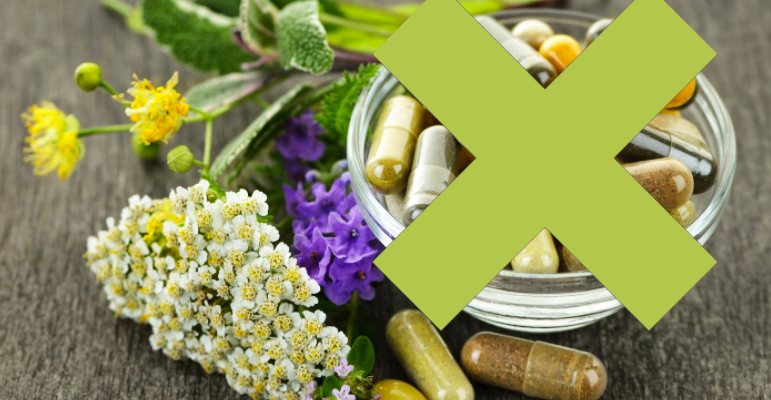


Five Best Practices For a Healthy Microbiome
Three years ago I wrote an article entitled, “New Chinese Medicine Tools to Replenish and Repair Our Gut” for the OM Newspaper. (click here to read) In that article I discussed recent research and ideas on how those practicing Eastern Asian Medicine can identify themselves as experts in helping patients achieve a “healthy gut” and rightfully take their place as part of one of the largest movements in health care today, “The Healthy Gut Movement”.
Over the past three years, a mountain of research has been published on our microbiome. This has inspired every variety of health practitioner to join the bandwagon called “Healthy Gut Movement”. Our foundation, as practitioners of Traditional Chinese Medicine (TCM) has been proven rock solid. Our lineage is profound and what TCM has known for thousands of years, Western science has just begun to understand. Digestion is of utmost importance to a healthy body and healthy mind. A healthy gut is the root to a healthy body.
We know more about the one cell organism that live in and on us than any time in history. We know they greatly affect our health. The increasingly large probiotic supplements sections at health food stores alone tells us consumers are buying into the idea that a healthy gut is important.
Most of us by now understand that bacteria live in and on our skin, eyes, ears, nose, mouth, and of course our gut. Our lower colon is the most populated with the largest diversity of these microscopic cells. In fact, they out-number our human cells 10 to 1, which means we are more microbial than human. Dr. Stephen Barrie, is an expert in the field of microbiome. He has spent the last 30 years conducting research, and recently commented, “it is our individual microbiome that is responsible for ALL disease states today”. His mission is to make disease an option. Because in his words, “a healthy body relies on a healthy and diverse biome.” In the interview where he spoke these words, he comments that this statement may shock the masses, but the evidence to prove this statement correct has already been amassed by many experts around the world. (His ebook is a great place to expand your knowledge it’s titled, “Microbiome: All Diseases Begin in the Gut (Short Guide to Fixing Your Gut)” His words echo many of the greatest teachers in Traditional Chinese Medicine.
Whole schools of thought were developed in the 12th century stressing “the importance of ‘Preserving Stomach-Qi” as the most important treatment method. Zhang Jie Bin, one of the four great masters from the Ming Dynasty and one of the most important doctors in the history of TCM wrote, “The doctor who wants to nourish life HAS to tonify stomach and spleen.” According to Li Dong-yuan it is of paramount importance to protect the spleen/stomach if people want to stay healthy and to strengthen them once they become diseased no matter what other organs are affected. According to Le Dong-yuan, ‘if the root is sound the branch will prosper’.
Emerging science has proven our gut, our lower colon is acting as our “second brain”. Many would say it is the first brain because our gut bacteria produce hormones, neurotransmitters, serotonin and chemicals that have yet to be identified. Our microbiome effect our daily thoughts, moods, actions and even dictates food cravings. The secret to weight control is now attributed to the types of bacteria you foster. So if you thought you ran the show, think again. The bugs within are more powerful than we know. It reminds me of the scene in “Men in Black” in the morgue where the little alien is seen at the control panel in the head, operating the big body below.
However, we can exert influence on the bacteria within by controlling what goes in and on our body. There is good news, our gut microbiota is malleable we can control our destiny. Our bodies are constantly looking to stay in homeostasis. Whether it’s balancing our blood sugar levels with food intake, or hormone levels with outside stressors. Our body is in a constant state of looking for balance. Our microbiome wants the same type of balance. It’s not coincidental that TCM has taught us the importance of balance with our treatments. Our foundation has always emphasized the primary goal is to bring balance to the body to achieve a healthy mental, physical and emotional state. Although we may not think about “balancing” our microbiome, by balancing everything in the body we help the bacteria within us, to also achieve balance. This microbial balancing act is just another name for treatments performs. Now it’s time we explain it to patients in ways that are more relatable.
How do we keep the bugs balanced?
The worldwide microbiome research confirmed what many of us have always understood. If we nourish our spleen, stomach channels, (our biome) we simultaneously nourish both our physical and mental well-being. So what do your bugs within like to eat and how can we keep them in balance? I recently spent a week listening to a group of experts in the “Healthy Gut Summit”. I want to share with you a few of their best words of advice to keep your microbiome balanced and healthy.
The Top Five Best Practices for a Balanced Biome:
1. Eat a variety of fermented foods. (a least 1 daily)
2. Eat foods high in polysaccharides every day
3. Eat at least 50 grams or more of fiber daily.
4. Individualized diets are best, NO diet is right for everyone.
5. Eat a diverse diet, (seasonal foods are best) this rule is king.
These five best practices may seem common sense to some, but how many of us are doing these five things daily? When talking with your patients about these five best practices let’s not forget our roots. Because everyone’s microbiome is different, the best way to treat individuals is the way TCM teaches us to diagnose and treat, INDIVIDUALLY! Balance the spleen/stomach channels according to each patient’s individual needs. A tonifying treatment, a sedating treatment, and qi moving treatment. You know best for your patients, you decide. The late, great, Giovanni said, “The stomach and spleen could be tonified at the end of each season, particularly at the end of winter, to regenerate the energy.”
Number one in the list of five best practices is fermented foods. In traditional cultures worldwide, fermented foods have played a part of every culture. This history lesson should not be overlooked. Fermented foods play a huge role in feeding our microbiome. Kimichi, sauerkraut, pickles, kombucha, miso, kefir and other fermented foods provide a variety of healthy bacteria. A daily sampling of new live bacteria from fermented foods makes your gut community more adaptable and diversified. Since diversity has been proven a key factor to a healthy gut ecosystem, there is no substitute for eating a variety of raw and fermented foods. A healthy brain also requires a healthy gut so make smart decisions everyday and if you need some encouragement, track what you eat in an app. This is a great way to give yourself positive feedback, as you can review the past days of food intake easily and feel encouraged that the small changes will have a big impact over time. We can starve or nourish our gut bacteria in as little as two weeks and see measurable changes from stool tests.
Some of the most interesting research in the last few years is that no diet is right for everyone. Just like the same probiotic supplement cannot possibly be the right for everybody. We all have individual sensitivities due to the colonies of bugs within. Some bodies are good at digesting seafoods and algae, others lack these bugs and cannot tolerate a diet rich in seafood. Research from just the last three years has shed light on the many diet programs and detoxing plans in books and online today. Most of these fad programs have little to no effect on improving gut health for the masses. What works for one person does not work for all.
What experts in the field do agree upon is the best way to improve your microbiome is NOT an elimination diet or detox program but rather a diet rich in poly-saccharide foods, high fiber foods, (50 -100 grams daily) and a diverse diet eating seasonally harvested food. The more diverse with vegetables the better. Meat protein should be more like a condiment than a main course. Sugar should be completely eliminated for many reasons and one you may not have considered. Sugar is digested and absorbed in the small intestines. Most of your good gut bacteria live in the lower colon. A diet high in sugar leaves nothing for your gut bacteria to feed on so they will eventually starve if all you eat is sugary foods. What’s worse, when your gut bacteria have nothing to eat they feed on the mucous membrane fence that divides their living space from space human colon cells inhabit. You’ve heard the saying “fences make for good neighbors”. Well, in this case, it couldn’t be more accurate. When bacteria eat away at the fence, this, in turn, creates inflammation. Starving your gut bacteria is a bad idea but unfortunately, much of the processed food eaten today is doing exactly that. Take care of your bugs and they will take care of you. Nourish the spleen/stomach channels to nourish life.
I highly recommend the book, THE GOOD GUT by Dr.s Justin & Erica Sonnenburg. Much of the information in this article is from the Sonnenburg research. I was lucky enough to meet Justin at a conference a few years ago and he is not only brilliant but humble. He often mentions in his talks that his hope is that the research coming from their Stanford lab trickles down to everyone. Their book was written for exactly that purpose. It’s an easy read, a great overview of some of the latest science from the microbiome researchers, and a perfect introduction for patients to their gut health, the gut-brain connection. The information will help you feel more knowledgeable to heal NEW patients as this gut health movement accelerates. It also has some fantastic recipes to create foods both you and your biome will love.
According to Dr. J. Sonnenburg, foods high in polysaccharides are powerhouses of nourishment for your microbiome. Sonnenburg says’s, “The safest way to increase your microbial biodiversity is to eat a variety of foods high in polysaccharides.” We are the lucky recipients of TCM herbal wisdom that understood Astragalus (huang qi) and Reishi mushroom (ling zhi) are two amazing herbs with a high content of polysaccharides.
When you change and balance your microbiome, you change just about everything in your body. Whether you build it or destroy it, the reins are in your hands. This is one key piece of information from the last few years of microbiota research. Balance is key, like everything in TCM. Rebalance your microbiome with herbs, foods, acupuncture and watch your health blossom all year long. Getting educated on the integral role these organisms play in our bodies can vastly improve their healing outcomes. By understanding and building on this knowledge, you will not only improve your health will be learning some of the greatest discoveries and advances in health care today.

